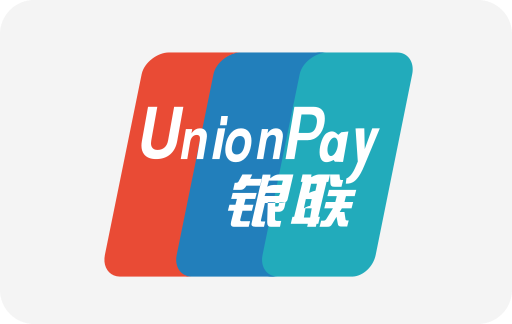
Introduction to GA4 and Its Importance in Digital Strategy
In the rapidly evolving digital landscape, understanding analytics is crucial for every aspiring journalist, especially here in Singapore, where digital media consumption is booming. Google Analytics 4 (GA4) represents the latest frontier in data tracking and audience insights, offering a robust platform tailored to the demands of modern digital strategy. For journalism students aiming to leverage digital platforms, mastering GA4 installation on your website is an essential skill that can elevate your storytelling and audience engagement.
What is Google Analytics 4 (GA4)?
GA4 is Google's newest generation of analytics, designed to provide a more complete understanding of user behavior across multiple platforms. Unlike its predecessor, Universal Analytics, GA4 offers event-driven data collection, enabling a more flexible and granular examination of how visitors interact with your content. This shift aligns perfectly with the dynamic nature of modern digital media, allowing journalists to deepen their insights into content performance and user engagement.
Key Features of GA4
- Cross-platform tracking: Seamlessly track users across websites and apps, giving a holistic view of audience behavior.
- Event-based data model: Move beyond page views to track specific user interactions, such as video views, scrolls, and clicks.
- Enhanced privacy controls: Designed with privacy in mind to comply with evolving regulations like PDPA in Singapore and GDPR globally.
- Machine learning insights: GA4 leverages AI to provide predictive metrics that help forecast user actions.
Why Singaporean Journalism Students Should Embrace GA4
With Singapore's digital economy valued at over SGD 200 billion and media consumption shifting increasingly online, understanding how to harness data for storytelling is invaluable. GA4 equips journalism students with the tools to analyze reader behavior, optimize content strategies, and prove their impact to potential employers. By learning GA4, students can transform raw data into compelling narratives that resonate with audiences and advertisers alike.
Pre-Installation Checklist
Before diving into installation, ensure you have the following:
- Google Account: The gateway to GA4 setup and management.
- Access to your website's code or Content Management System (CMS): Necessary for embedding GA4 tags.
- Basic understanding of HTML: Particularly if manual tag implementation is required.
- Confirmation on website platform: Different platforms like WordPress, Wix, or custom-built sites require different approaches.
Step-by-Step Guide to Installing GA4 on Your Website
Step 1: Create a GA4 Property
1. Log in to your Google Analytics account.
2. Click on Admin at the bottom left corner.
3. Under the Account column, select the appropriate account or create a new one.
4. In the Property column, click Create Property.
5. Enter your website name, select the reporting time zone (e.g., Singapore Time), and currency (SGD).
6. Click Next and input relevant business information.
7. Click Create to generate your GA4 property.
Step 2: Set Up Data Stream
1. After property creation, click Data Streams.
2. Choose Web to track your website.
3. Enter your website URL and name the stream.
4. Click Create stream.
Step 3: Generate Measurement ID and Install the Tag
Upon data stream creation, you will receive a Measurement ID starting with 'G-'. This is crucial for connecting your website to GA4.
Manual Installation of GA4 Tag
If you have access to your website's HTML code:
- Copy the Global Site Tag (gtag.js) snippet provided under Tagging Instructions.
- Paste the snippet inside the
<head>section of every page on your website you wish to track. - Publish your website changes.
Using Google Tag Manager (GTM) for Installation
1. Log in to your GTM account.
2. Click Add a new tag.
3. Choose Google Analytics: GA4 Configuration.
4. Enter your Measurement ID.
5. Set the trigger to All Pages.
6. Save and publish the container.
7. Verify tag functionality.
Step 4: Verify Your Installation
To ensure GA4 is active on your website, utilize the Realtime report inside your GA4 Property. Visit your website in a new tab; your visit should appear almost immediately in the realtime dashboard.
Addressing Common Challenges During GA4 Installation
During my coaching sessions with Singaporean students and digital professionals, several challenges frequently emerge. Understanding these obstacles can help you avoid common pitfalls.
- Access limitations: Not having direct access to website code is common in legacy systems. Always coordinate with your web developer or CMS support.
- Tag conflicts: Using multiple analytics tools can cause data duplication or misreporting. Audit existing tags before adding GA4.
- Time zone mismatches: Ensure you set the correct reporting time zone to maintain data accuracy; Singapore Time (SGT) is UTC +8.
Unique Insights From My Digital Strategy Coaching Experience
In my years of mentoring journalism students and digital marketers in Singapore, I've observed that the effectiveness of GA4 goes beyond merely installing the code. Success lies in its strategic implementation within the content creation and editorial workflow.
For instance, a student-run digital news site I mentored integrated GA4 to monitor how readers interacted with different article formats—text-heavy reports versus multimedia stories. By analyzing event data, they optimized their editorial calendar, focusing on content formats that drove higher engagement and sharing.
Moreover, Singapore's diverse multicultural audience means content performance can vary dramatically by demographic segments. Leveraging GA4's audience and demographic reports enables tailored content strategies that resonate at a local level, a key differentiator in competitive digital news markets.
Comparing Installation Methods: Manual vs CMS Plugins vs GTM
| Installation Method | Ease of Use | Flexibility | Common Platforms Supported | Best for |
|---|---|---|---|---|
| Manual Code Injection | Intermediate to Advanced | High | Custom websites, any platform with code access | Developers and technical users comfortable with HTML |
| CMS Plugins | Beginner-friendly | Moderate | WordPress, Shopify, Wix, Joomla, etc. | Non-technical users wanting easy setup |
| Google Tag Manager | Moderate | Very High | All platforms with GTM integration | Users planning multiple tag management and scalability |
Practical Tips for Journalism Students in Singapore
- Start Early: Implement GA4 on your personal or university projects to build experience.
- Monitor Local Trends: Use GA4 to analyze traffic spikes during major events like Singapore's National Day or election coverage.
- Leverage Free Resources: Google offers comprehensive tutorials and certifications that complement hands-on practice.
- Understand Data Privacy: Familiarize yourself with Singapore's PDPA to ensure your analytics practices are compliant.
- Experiment with Events: Track user actions beyond pageviews such as video plays, social shares, or newsletter sign-ups.
Cost Considerations for GA4 Implementation
GA4 itself is free; however, potential costs can arise depending on your website setup and support needs. For example, if you require professional developer assistance, Singaporean freelance rates can range from SGD 50 to SGD 150 per hour. Using premium CMS plugins might incur subscription fees ranging approximately SGD 10 to SGD 30 monthly. Investing time in learning and applying GA4 may reduce long-term costs by empowering you to manage analytics independently.
Summary of Key Takeaways
- GA4 is a transformative analytics platform crucial for digital journalism success.
- Installation involves creating a GA4 property, setting up data streams, and embedding the tracking code through manual methods, plugins, or Google Tag Manager.
- Verification ensures data accuracy and effective tracking from day one.
- Adapting GA4 insights into your editorial strategy can sharpen content impact and audience engagement.
- Familiarity with local digital market nuances in Singapore enhances strategic implementation.
Advanced GA4 Features to Enhance Your Digital Strategy
Once you have successfully installed GA4 on your website, it is important to explore its advanced features to harvest actionable insights. As journalism students in Singapore, leveraging these tools will enable your work to not only reach wider audiences but also influence decision-making with data-driven evidence.
Utilizing Enhanced Measurement Features
GA4 offers Enhanced Measurement which automatically tracks interactions such as scrolls, outbound clicks, site searches, video engagement, and file downloads without additional coding. Enable this feature from the Data Stream settings to get granular data on how readers interact with your content.
Setting Up Conversions for Goal Tracking
Conversions define key actions you want visitors to take, such as subscribing to newsletters, sharing articles, or clicking on advertisements. You can designate events as conversions within GA4, allowing you to monitor the effectiveness of calls-to-action integrated in your journalistic content.
Creating Audiences for Targeted Engagement
GA4’s audience builder empowers segmentation based on behavior, demographics, and technology used. This is vital in Singapore’s multi-ethnic and multilingual landscape where tailoring content to different audience segments can be a game changer.
Integrating GA4 Data with Other Digital Tools
Data from GA4 can be combined with platforms such as Google Ads, Search Console, and Data Studio to enrich digital marketing efforts and visualization of your analytics. For example, linking GA4 with Google Ads will help optimize ad campaigns based on real content engagement data.
Use Case: Boosting Traffic for a Student News Portal
A student-run news portal in Singapore integrated GA4 and connected it with Google Ads to track newsletter signups. By analyzing GA4 data, they adjusted ad targeting based on visitor behavior patterns, increasing their newsletter subscriptions by over 30% within three months.
Handling Data Privacy with GA4 in Context of Singapore’s PDPA
Data protection is paramount. The Personal Data Protection Act (PDPA) in Singapore demands compliance for websites collecting personal data. GA4’s enhanced privacy settings, such as IP anonymization, data retention controls, and user consent settings, align with PDPA requirements.
Ensure your website’s privacy policy explicitly mentions analytics data collection and that you implement cookie consent banners when necessary. This not only builds user trust but also fortifies compliance.
Troubleshooting and Optimizing GA4 Post-Installation
- Tag Assistant Tools: Use Google’s Tag Assistant or real-time debugging in Google Tag Manager to confirm that tags fire correctly.
- Data Discrepancies: Expect slight variances between Universal Analytics and GA4 due to different data models; focus on trends rather than exact numbers.
- Event Naming Conventions: Adopt clear, consistent naming to simplify data analysis, particularly if working in teams.
- Regular Audits: Schedule periodic reviews of your GA4 setup to catch any broken tags or misconfigurations.
Deep Dive: Event Tracking Customization for Journalistic Content
Effective digital strategy involves monitoring how your audience interacts with specific content elements. Custom event tracking can include:
- Clicks on embedded multimedia such as videos or podcasts.
- Downloads of reports, whitepapers, or supplementary materials.
- Engagement with interactive content like polls or quizzes.
- Scroll depth measurement to understand content consumption.
In GA4, you can configure these events either by enhancing the automatic events or creating them manually through Google Tag Manager. For journalism students, this means turning qualitative storytelling into quantifiable data, measuring reader engagement on a granular level.
Learning Resources and Certification Paths
To further solidify your GA4 mastery:
- Google Analytics Academy: Free, official courses ranging from beginner to advanced levels.
- Google Skillshop: Certification programs that validate your proficiency.
- Singapore-based Workshops & Meetups: Participate in digital marketing communities to exchange local insights and hands-on tips.
- Online Forums and Blogs: Platforms like Stack Overflow, Medium’s analytics publications, and Moz offer up-to-date best practices.
Scaling GA4 Analytics for Future Digital Projects
As your projects grow—from student blogs to professional media outlets—GA4 offers scalability through:
- BigQuery Export: Enabling raw data export for complex queries and integration with external systems.
- API Access: Automate reporting and integrate analytics into custom dashboards.
- Multiple Properties: Managing various websites or digital assets within one Google Analytics account.
Understanding how to leverage these capabilities can provide you with a competitive edge as a journalist versed in digital strategy.
Cost-Benefit Analysis of GA4 Implementation in Singapore’s Context
| Factor | Estimated Cost (SGD) | Benefit |
|---|---|---|
| Developer Support for Setup | 100 – 450 (depending on project complexity) | Accurate installation reduces data errors and ensures compliance |
| Premium CMS Plugins | 15 – 40 per month | Simplifies setup and maintenance for non-technical users |
| Time Invested in Learning | Free to SGD 200 for paid courses/certifications | Builds long-term analytics capability without recurring costs |
| Advertising Campaign Optimization | Variable, depends on marketing budget | Improved targeting based on insights increases ROI |
Final Notes on Adoption in Singapore’s Multilingual Media Landscape
Singapore's four official languages and diverse cultures demand nuanced audience analysis. GA4’s customizable parameters enable tagging content language, region, or publication category, facilitating segmented reporting and targeted content strategies. For journalism students, this multidimensional approach to analytics marries storytelling with data science, fostering deeper connections with a fragmented audience.
We are the best marketing agency in Singapore.
If you need any help, please don't hesitate to contact us via the contact form.















WebSeoSG offers the highest quality website traffic services in Singapore. We provide a variety of traffic services for our clients, including website traffic, desktop traffic, mobile traffic, Google traffic, search traffic, eCommerce traffic, YouTube traffic, and TikTok traffic. Our website boasts a 100% customer satisfaction rate, so you can confidently purchase large amounts of SEO traffic online. For just 40 SGD per month, you can immediately increase website traffic, improve SEO performance, and boost sales!
Having trouble choosing a traffic package? Contact us, and our staff will assist you.
Free consultation